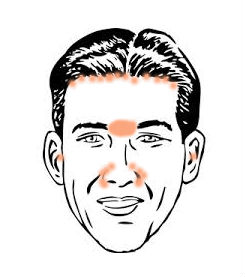Seborrheic dermatitis is a chronic skin condition that tends to recur frequently. It is a whitish and sometimes yellowish scaling on the scalp (when mild, it is called “dandruff”), sides of the nose, between the eyebrows, on the chest, and may be slightly itchy.
It is estimated that 3% of people suffer from it and it is more common around the age of 30-40. It is more common in HIV+ people and Parkinson’s patients. It can also occur in infants, but I will discuss seborrheic dermatitis in children in another, more specific post.

Although it is an extremely common condition, the causes are not clear. It is known to be somehow related to the presence of a fungus called Pityrosporum ovale (of the genus Malasezzia), which normally lives on the skin of humans, but which, by mechanisms that are not entirely clear, causes this kind of “irritation” to appear on the skin of some people.
It is not a serious condition, nor is it contagious, nor does it have any worrying consequences. Nevertheless, it is usually quite annoying because it can recur for decades and in many cases (not to say almost all) is not completely cured. It tends to get worse with stress and in the cold months, while getting better in the summer (partly because of the peace and quiet and partly because of the sun’s UV rays).
Seborrheic dermatitis can in some cases resemble other skin diseases, but its diagnosis is relatively simple for dermatologists, so it is usually not necessary to do any kind of test.

Follow this link to see more pictures of seborrheic dermatitis.
Since the flare-ups tend to come and go, the way to control them is to use an appropriate treatment for each of these flare-ups. We will talk about this in another post ….:)
